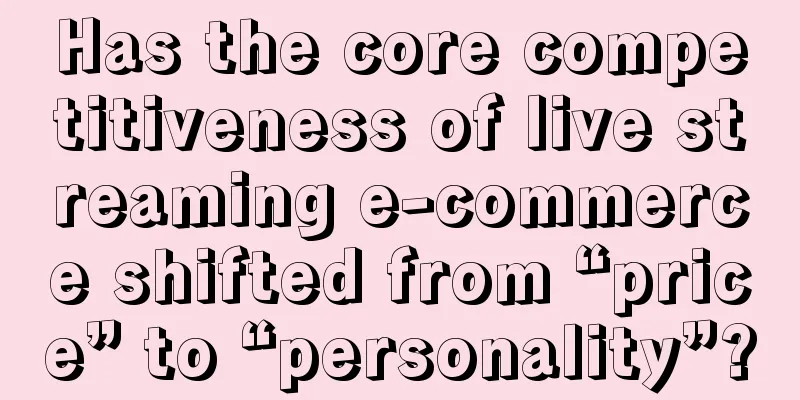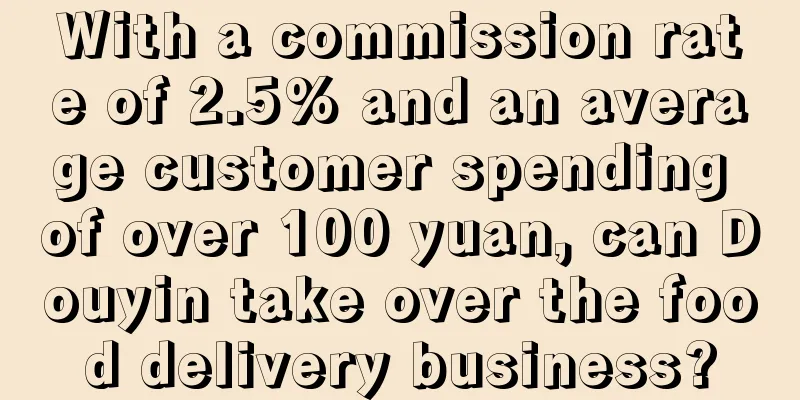Charity marketing is not just about “donating, donating, donating”

Public welfare is becoming a compulsory subject for every enterprise, especially public welfare marketing. As the name suggests, public welfare marketing is a brand marketing in the form of public welfare, with the ultimate goal of shaping the brand image, deepening brand awareness or improving user favorability. A survey shows that more than 70% of Chinese respondents hope that brands can take practical actions to support public welfare. Driven by consumer perceptions, public welfare is no longer just an empty term for brands, but is increasingly becoming a booster for brand development. As in previous years, as soon as September began, various brands were gearing up to launch a wonderful "marketing war" around charity and public welfare. As we all know, there are many kinds of public welfare, including growth education for children, protection of the disabled for vulnerable groups, and low-carbon environmental protection for the social environment. These contents constitute the direction of brand marketing. Today, we might as well change our thinking and talk about the different ways to open brand public welfare from the perspective of marketing. 1. Donation: Creating long-term impactFirst of all, donation can be said to be the most common and convenient way to practice public welfare. Brands fulfill their social responsibilities in the name of donations, enhance their presence by showing their attention to and participation in social events, and thus improve their favorability in the hearts of the audience. Many small brands that were previously unknown or old brands that are gradually declining can quickly enter the public eye in a short period of time, promoting user favorability to directly convert into product sales. For example, Hongxing Erke, which has been very popular in the field of charity in the past two years, has been on the hot search several times with large donations, triggering social public opinion. However, it is worth noting that what makes Erke stand out is the contradiction between its own assets and the amount of donations . An old domestic brand with declining revenue did not hesitate to invest tens of millions to provide assistance in the face of a national disaster. What this demonstrates is the brand's strong sense of social responsibility and its responsibility as the backbone of the nation. This conflict was constantly exaggerated and amplified through the spread of the Internet, which aroused the resonance of the audience under the strong emotional rendering, thus triggering a wild consumption frenzy among Chinese people. On the contrary, for some well-known companies or large factories, "donation" can no longer be an additional expression of goodwill, but has become more and more their responsibility. Donating more is "what you should do", while donating less may lead to criticism or judgment. For example, in the recent Luding County earthquake incident, whether it was ByteDance and Tencent donating 5 million yuan, Pinduoduo donating 3 million yuan, or China FAW donating 20 million yuan, they were all questioned to varying degrees by netizens. Ultimately, it is because there is a gap between the proportion of its donation amount in its brand assets and the expectations of its audience. Weibo topic discussion It can be seen that a brand's donation behavior for a specific event is often influenced by factors such as the donation amount, brand awareness, and own assets, resulting in three results: positive public opinion, negative public opinion, and no one cares. However, since such donations are often one-off, the public opinion generated by them will only last for a short period of time. For brands that receive negative reviews, time is the best antidote; for brands that receive positive reviews, if they cannot grasp the direction of public opinion in time and continue the enthusiasm, the brand goodwill accumulated in the short term will often collapse like a tower made of loose sand under the erosion of time. It has only been more than a year since Hongxing Erke's offline stores went from being full of customers to being deserted today. So, how can we make donation-related charitable activities an effective event that will bring long-term benefits to the brand? Catastrophic events are usually sporadic, and to continue to receive the traffic brought by donations, one must either expand the influence or extend the battle line. The 99 Charity Day initiated by Tencent Charity is a typical example of combining the two. As the pioneer of "carnival-style" charity, Tencent has maximized the social influence of the 99 Charity Day. The first is to fully cover social issues. This year, the 99 Charity Day focuses on rural issues, so Tencent Charity has extended its tentacles to different fields, from caring for the elderly and the hearing-impaired, to protecting the mental health of rural children and providing career enlightenment for children. Tencent Charity starts from different dimensions to cover as many problems as possible encountered by rural groups in life and to help every specific charity dream. Secondly, we try to give full play to the influence of the main body of communication. From linking up with charity organizations and brands to working with nearly 100 celebrities, Tencent Charity mobilized its own resources and used the brand appeal and celebrity effect to expand the scope of the event. Finally, there are a variety of ways to play the activities. Online, Tencent Charity uses red flowers to represent kindness. In addition to releasing the event theme video, it also launched the "Do Good Together" event on the official website, calling on users to donate red flowers by donating steps, answering questions, donating money, or even using Tencent's internal products, lowering the threshold of the event and thus increasing the participation in the event; offline, Tencent Charity also launched a charity concert, inviting singers to sing dreams together with charity recipients. Tencent Charity Little Red Flower Charity Concert Since 2015, Tencent Charity has continued this festive event to this day. From this, we can get a glimpse of the brand's long-termism, and we can also see that under the influence of charity activities, the brand's social responsibility is becoming increasingly prominent. 2. Convey the proposition - create a specific brand imageSometimes, conveying ideas is a thankless job, which is reflected in: 1) The early stages of insight, creativity, and strategy are time-consuming and laborious. If the content is not profound enough, it will not only fail to impress people, but may also be criticized as being "superficial"; 2) Compared with direct donations, the impact of conveying propositions on public welfare is often difficult to materialize in a short period of time. Therefore, if a brand hopes to impress consumers through specific propositions and convey brand warmth, it must invest a lot of time and energy and implement this public welfare strategy for a long time. However, if a brand can successfully create a specific brand image in the minds of consumers through the output of public welfare concepts, the positive effect it brings is also incomparable. This influence may be no less than Coca-Cola's sharing and Nike's struggle concept. In this regard, PROYA's series of public welfare actions in the past two years deserve praise. Since 2021, PROYA has launched relevant public welfare activities targeting some common social phenomena. For example, on Women’s Day in 2021, the slogan #gender is not the boundary, prejudice is# was put forward, calling for fighting against gender prejudice and breaking stereotypes; 2021 PROYA "Fights Gender Bias" In October of the same year, on World Mental Health Day, it launched the "Echo Project" for adolescent mental problems, encouraging the expression of every emotion and rejecting emotional shame; 2021 PROYA "Echo Project" This year on Women's Day, PROYA once again talked about "fighting gender bias", using advertisements to present diverse male and female images, and initiated gender education starting from children; 2022 PROYA "Fights Gender Bias" This year's school season, in cooperation with China Education Television, launched the "Firefly Project - Anti-school Bullying Public Welfare Action", calling on everyone to see the so-called "small things" so that "big things don't have to happen" and not be bystanders to school bullying. Looking at PROYA's 2022 "Firefly Project", we can find several good points in conveying its propositions: The first lies in the continuity and development of the topic. Regarding "gender bias", PROYA started with the concept in the first year, focusing on "femininity" and "masculinity". Through analysis and explanation, it made the public realize that gender bias is restricting everyone's life, which is to promote audience awakening from the cognitive level; In the second year, PROYA delved into this theme, starting from concrete social phenomena, such as taking care of family, studying science, and working hard outside... These things have no gender in nature, but they are artificially given gender attributes by solidified social concepts. Based on this, PROYA also linked eight brands to jointly use outdoor billboards and entered bookstores, trying to deepen user cognition through multiple forms. This is to inspire the audience to identify with specific examples and implement them into daily actions. This gradual form of concept communication not only allows the brand to express issues in multiple ways, but also reflects the brand's sense of responsibility and dedication in discussing social issues, and demonstrates the brand's sincerity in doing public welfare. The second lies in the depth and diversity of insight. Also speaking for women on Women's Day, PROYA started with women, but was not limited to women. Instead, it extended to all groups that suffer from gender bias, further expanding the scope of the voice. In this way, PROYA not only differentiates its own purpose from common brand propositions, but also effectively establishes a consensus between the two sexes and highlights its brand structure. This is also the case with PROYA in its discussion of adolescent growth issues. From paying attention to inner emotions to opposing school violence, adolescents encounter a variety of problems in the process of growing up, but society often does not pay enough attention to this. Starting from teenagers, PROYA extends to topics at different levels, reflecting its multi-faceted concern for the youth group; and from "Incomplete Guide to Emotional Healing" to "Guide to Prevention of School Bullying", PROYA's advocacy does not stop at attracting attention, but further extends to how to solve it. By making the leap from what to how , PROYA has already stood at the forefront of public issues as a mediator. Finally, it depends on the relevance of the brand itself to public welfare issues. Although public welfare and commerciality are to some extent conflicting contradictions, for brands with marketing purposes, extracting relevant elements from public welfare and moderately constructing necessary brand associations will help further deepen users' awareness of the brand. For example, in last year's Women's Day marketing, PROYA called for gender equality while focusing on "double resistance". This double resistance not only directly called out the attitude of "fighting gender bias and breaking stereotypes", but also indirectly emphasized the selling point of PROYA's classic product double resistance essence "anti-oxidation and anti-sugar". Going further, PROYA’s insight into “gender bias” is actually widely present among young people in their early 20s, who are exactly the target audience that the brand is focusing on. Therefore, whether it is the double entendre from the topic to the product selling point, or the fit between social insights and target audiences, PROYA has achieved low-key dissemination of commercial value beyond public welfare marketing, which not only enhances the brand voice from a macro level, but also implants product attributes into the minds of the target group at a micro level. 3. Public welfare products - implementing environmental protection conceptsThe third common type of brand philanthropy can be seen in the creation of philanthropic products, which are often closely related to environmental protection. Environmental protection has long been an issue of concern to people around the world. From energy conservation and emission reduction, low-carbon travel to protecting biodiversity, as long as behaviors that affect the environment exist, people will never stop discussing environmental protection. In terms of environmental protection, the relevant concept has been spread everywhere. The most important thing is to directly encourage the public to practice environmental protection through action. For brands, developing environmentally friendly products is the fastest way to achieve results. Overseas, Allbirds has become a casual shoe brand that has attracted much attention from celebrities. As a shoe brand that focuses on natural and environmentally friendly features, Allbirds currently has only two core series. Its product research and development only uses New Zealand Merino wool, South African eucalyptus fiber and Brazilian sugarcane , which are completely derived from renewable resources. Allbirds strives to implement the simplicity of its shoes and has invested heavily in marketing. It used Time magazine to promote its quality, targeted high-end groups, and used the celebrity effect to cultivate the minds of potential consumers, making this seemingly ordinary casual shoe brand sell more than one million pairs of shoes in just two years. There is no doubt that high-performance sports shoes such as Allbirds can minimize pollution to the earth's environment. However, not every company has the conditions to achieve such high-cost brand marketing. For companies that are unable to do so, improving or increasing recycling efficiency at the packaging level is also a good option. This year, many brands have made efforts in this regard. In terms of improving packaging, Sprite eliminated green bottles and switched to transparent bottles to reduce non-recyclable plastic waste: Sprite phases out green bottles and switches to transparent bottles Master Kong, PepsiCo and Dongpeng Special Drink have successively removed plastic labels to improve recycling efficiency: Master Kong and PepsiCo's "No Label" campaign ONLY uses discarded fishing nets to make clothes, turning marine animal killers into loving clothes: ONLY makes clothes from discarded fishing nets Origins launched the "Every Bottle Counts as a Tree" environmental protection campaign, inviting consumers to bring their empty bottles to exchange for gifts, calling on people to protect the earth's barrier, taking from nature and giving back to nature: Origins "Counting Trees in One Bottle" Environmental Protection Campaign In addition to physical products, virtual products such as Alipay Ant Forest are also contributing to environmental protection. Since its launch six years ago, Ant Forest has attracted the attention of a large number of users with its strong interactivity and fun. Taking the bus, riding a bicycle, walking, and offline payments can all generate energy to water the trees. It transforms behaviors that are within people's reach in daily life into public welfare in the form of games, and truly feeds back into environmental protection in real life, so that public welfare can truly fall on every individual, and also allows users to deeply feel the sense of accomplishment and mission of "doing small things is doing public welfare." Ant Forest Sixth Anniversary Charity Record On the occasion of its 6th anniversary this year, Ant Forest reviewed its environmental protection records over the years. According to statistics, through low-carbon living, users have generated more than 26 million tons of green energy, applied to plant more than 400 million real trees, protected more than 2,700 square kilometers of public welfare protection areas, and attracted more than 140 million people to pay attention to biodiversity in the magical species. There is no size or form for charity. Whether it is donation, concept advocacy or product creation, these are all efforts made by brands for charity based on their own attributes. In the future, we also hope to see more brands join the charity and jointly exert the social influence of charity under the group effect. Author: TOP Jun Source: TopMarketing (ID: TMarketing), when it comes to Marketing, Top is a belief - TopMarketing. |
<<: Strategies and methods of charity marketing
>>: How to write public welfare copy?
Recommend
Is Lazada Indonesia easy to run? Does it have potential?
Lazada Indonesia is a site that many merchants wil...
How to do content marketing on an independent website? What are the techniques?
In the cross-border e-commerce industry, the indep...
What does Amazon's reserved inventory quantity mean? What happens if Amazon keeps reserving but does not put the product on the shelves?
As one of the world's largest e-commerce platf...
How can I downgrade my Amazon Mexico account to a personal account? How can I register?
In the digital age, Amazon, as a global e-commerce...
Xiaohongshu focuses on local life and launches multiple supporting tools
Xiaohongshu is rapidly expanding into the local li...
Is it considered a failure if a new product on Amazon fails to be promoted within two months? How to promote a new product?
On the Amazon platform, after launching a new prod...
Why is your store not visited? Physical store owners must know this strategy
In the fiercely competitive physical business envi...
A new marketing strategy - "receipt literature"
This article will start from the McDonald's re...
Is there any risk in registering an Amazon online store? How much money is required?
Amazon is a well-known brand all over the world, e...
Back to the Nike promotional video, is “licking the racket” disgusting or cool?
Nike's Olympic promotional ad has recently cau...
Is it better to go to Alibaba headquarters or Lazada? What are the conditions and fees for entering Lazada?
There are actually quite a lot of merchants doing ...
How much can a new Amazon seller earn per month? Several key factors that affect income
As a new seller, a common concern is how much mont...
Generation Z loves trendy things! (Part 2)
From philately culture to cultural relics collecti...
Private domain is a gold mine, be careful not to kill yourself (Secrets of the second half of private domain in 2023)
The private domain operation model helps enterpris...
Is Amazon related because of a single factor? Why is it related?
On the Amazon platform, both consumers and merchan...









